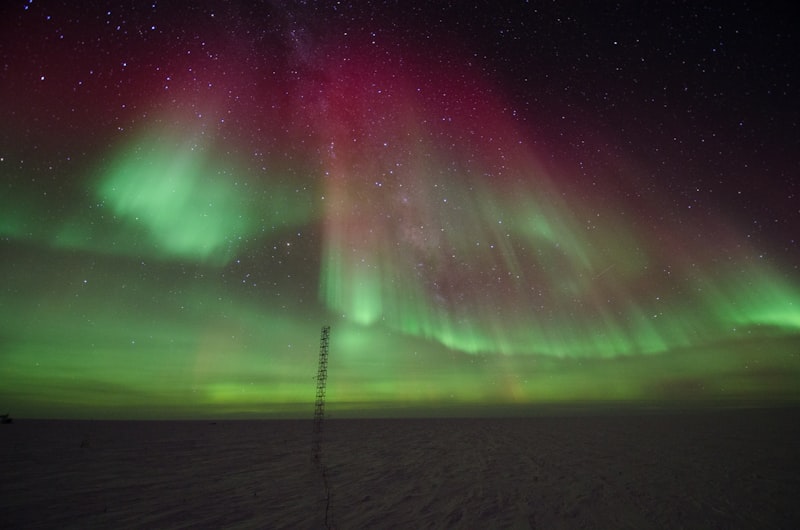Imagine standing on a cliff, watching as dark clouds gather on the horizon, lightning dancing across the sky like crackling veins of electricity. The sheer power of nature is on full display, reminding us of our place in a world where forces beyond our control shape the landscape.
Meteorological phenomena aren’t just about dramatic storms, though. They encompass a wide range of natural occurrences that affect our daily lives. The gentle patter of raindrops on a windowpane, the crisp chill of a winter breeze, or the refreshing coolness of a summer morning—all these moments are part of the intricate tapestry of weather patterns.
What makes meteorological phenomena so fascinating is their unpredictability. No two weather events are exactly alike, and each brings its own unique blend of sights, sounds, and sensations. It’s like nature’s symphony, with each weather element playing its part in creating the overall composition.
Have you ever wondered why some people find comfort in the rumble of distant thunder, while others feel a rush of excitement at the sight of swirling tornado clouds? It’s because meteorological phenomena evoke powerful emotional responses, stirring something deep within us that connects us to the natural world.
In a world where technology often seeks to predict and control the future, meteorological phenomena remind us of the inherent unpredictability and beauty of nature. They teach us humility and respect for the forces that shape our environment, encouraging us to marvel at the wonders that unfold before our eyes.
Unraveling the Mysteries: The Science Behind Meteorological Phenomena

Have you ever stood outside, watching in awe as lightning streaks across the sky or marveling at the dance of raindrops on a windowpane? Meteorological phenomena like these have fascinated humanity for centuries, prompting us to delve deeper into understanding the science behind them.
One of the most captivating aspects of meteorology is lightning. When charged particles within a cloud separate, they create an electric field that can discharge as lightning. This powerful phenomenon heats the air to around 30,000 degrees Celsius (54,000 degrees Fahrenheit) – hotter than the surface of the sun! Lightning occurs approximately 44 times per second worldwide, showcasing nature’s incredible power.
Rainbows, another enchanting meteorological wonder, result from the refraction and reflection of sunlight through raindrops. Each raindrop acts like a tiny prism, splitting sunlight into its component colors and creating the arc of colors we see in the sky after a rain shower. Did you know that the order of colors in a rainbow – red, orange, yellow, green, blue, indigo, and violet – is always the same due to the differing wavelengths of each color of light?
For those who have experienced the eerie calm before a storm, understanding the science of barometric pressure can shed light on this phenomenon. A sudden drop in barometric pressure often precedes a storm, indicating a rapid decrease in air pressure as the storm approaches. This change can be felt as a heaviness in the atmosphere, sometimes accompanied by a noticeable increase in humidity and wind speed.
Meteorology isn’t just about understanding these natural marvels; it also plays a crucial role in predicting weather patterns and keeping communities safe. Meteorologists use advanced technology like satellites, radar, and computer models to monitor and forecast weather conditions accurately. This data helps us prepare for everything from mild showers to severe storms, mitigating risks and protecting lives.
Next time you witness a thunderstorm or catch a glimpse of a rainbow, remember the intricate science behind these meteorological phenomena. Each phenomenon tells a story of nature’s complexity and beauty, inviting us to marvel at the wonders of our planet’s atmosphere.
From Thunderstorms to Rainbows: A Journey Through Meteorological Wonders
But then, as quickly as it came, the storm begins to dissipate. The rain slows to a gentle patter, and the clouds part to reveal a sight that never fails to awe: a rainbow. A perfect arc of vibrant colors stretching across the sky, a celestial bridge connecting earth and sky in a fleeting moment of beauty. Each hue, from the deep reds to the vivid blues, is a testament to the physics of light and water droplets working together to create a visual symphony.
Meteorological wonders like these remind us of the delicate balance of nature and the intricate processes that govern our atmosphere. Behind every thunderstorm and rainbow lies a story of atmospheric dynamics and the interplay of moisture, temperature, and air currents. It’s a dance that scientists have studied for centuries, yet it still holds mysteries that continue to intrigue and inspire.

What makes these phenomena even more fascinating is their transient nature. A thunderstorm can build up in minutes and unleash its power in a fury of wind and rain, only to dissipate just as quickly, leaving behind a sense of awe and wonder. Similarly, a rainbow appears when conditions are just right – sunlight refracting through raindrops at the precise angle to create its iconic arc.
As we marvel at these meteorological wonders, we are reminded of our planet’s capacity for beauty and resilience. From the darkest storm clouds to the brightest rainbows, each moment serves as a reminder of the interconnectedness of all things and the remarkable forces that shape our world. So next time you witness a thunderstorm brewing or catch a glimpse of a rainbow after the rain, take a moment to appreciate the awe-inspiring spectacle of nature’s meteorological wonders.
Chasing Storms: The Thrilling Lives of Meteorological Researchers
Ever wondered what it’s like to dive headfirst into the heart of a storm, where lightning crackles and winds roar like furious beasts? Meteorological researchers live this adrenaline-fueled reality every day. Their job isn’t just about predicting weather; it’s about braving nature’s most formidable displays to gather crucial data that could save lives.
Imagine standing on the edge of a thunderstorm, eyes fixed on the swirling clouds above. For these researchers, this is their office. They chase storms across vast landscapes, equipped with cutting-edge technology and a passion for unraveling nature’s mysteries. Each storm offers a unique puzzle: How does it form? Where will it go? What impact will it have?
The rush isn’t just about danger; it’s about discovery. These scientists are modern-day adventurers, exploring the atmospheric frontier to better understand our planet’s weather systems. They deploy drones into the heart of tornadoes, release weather balloons into towering cumulonimbus clouds, and track hurricanes from their tumultuous birth in the ocean to their landfall.
But it’s not all Hollywood-style heroics. There’s meticulous planning behind every storm chase, months of analyzing weather patterns and computer models before setting out. It’s a blend of science and intuition, where years of experience guide split-second decisions on when to get closer or retreat.
In the field, the thrill is palpable. Picture a team of researchers, faces lit by the glow of radar screens, as they witness a supercell thunderstorm unleashing its fury. They’re not just observers; they’re documentarians of nature’s most spectacular shows, capturing data that could revolutionize our understanding of severe weather events.
For meteorological researchers, each storm is more than a phenomenon; it’s a narrative waiting to be decoded. They’re storytellers, using data as their ink to write the tales of hurricanes, blizzards, and monsoons. Their work doesn’t just inform weather forecasts; it shapes our resilience against natural disasters and our ability to adapt to a changing climate.
The Beauty in Chaos: Captivating Images of Meteorological Phenomena
Have you ever paused to marvel at the raw beauty of nature’s chaos? Meteorological phenomena offer a breathtaking glimpse into the power and wonder of our planet’s atmosphere. From towering thunderclouds to mesmerizing rainbows, these natural spectacles captivate our senses and ignite a sense of wonder.
Imagine standing beneath a tumultuous storm, where lightning dances across the sky like crackling veins of light. Each thunderclap reverberates through the air, a reminder of nature’s immense energy. It’s as if the heavens themselves are putting on a dramatic show, showcasing the primal forces at play.
Or consider the delicate intricacy of a rainbow after a heavy downpour. A fleeting masterpiece painted across the sky, blending vibrant hues in a harmonious arc. It’s a reminder that even amidst chaos, there exists beauty and order waiting to be discovered.
Meteorological phenomena are not just moments in time; they are snapshots of nature’s artistry. Whether it’s the serene majesty of a sunset casting golden hues across the horizon or the eerie calm before a powerful tornado, each scene tells a story of atmospheric dynamics.
These phenomena also serve as reminders of our planet’s fragility and resilience. They highlight the interconnectedness of Earth’s systems and the delicate balance that sustains life. In a world where chaos often reigns, meteorological events offer a glimpse into the grandeur of natural processes beyond human control.
Next time you witness a thunderstorm brewing on the horizon or a rainbow stretching across the sky, take a moment to appreciate the beauty in chaos. These phenomena are not just fleeting occurrences but windows into the awe-inspiring complexity of our world.
Let yourself be swept away by the wonder of nature’s artwork, where every cloud, every gust of wind, and every drop of rain tells a story of creation and renewal. Embrace the chaos, for within it lies a beauty that transcends words and leaves an indelible mark on our hearts and minds.
Weather Wonders: How Meteorological Phenomena Shape Our Environment
From the gentle kiss of a morning mist to the tumultuous roar of a thunderstorm, meteorological phenomena are the awe-inspiring forces that shape our environment in profound ways. These wonders of weather not only captivate us but also play a crucial role in the balance of nature.
Consider the delicate dance of clouds. Clouds aren’t just fluffy decorations in the sky; they are dynamic formations that signal impending weather changes. Cumulonimbus clouds, towering and majestic, bring with them the drama of thunder and lightning, reminding us of nature’s raw power. In contrast, the wispy tendrils of cirrus clouds paint the sky with their feathery beauty, often preceding fair weather.

Rainbows, those fleeting arcs of color across the sky, are nature’s masterpiece formed by the refraction and reflection of sunlight through raindrops. They symbolize hope and promise after a storm, reminding us of the beauty that can emerge from even the darkest moments.
The gentle touch of fog blankets landscapes in mystery, transforming familiar scenes into ethereal realms. Fog dampens sound and softens edges, creating a quiet introspective atmosphere where time seems to slow down.
Hurricanes and tornadoes, though destructive, are marvels of atmospheric dynamics. They remind us of the immense energy swirling around our planet, shaping coastlines and reshaping landscapes with their powerful winds and torrential rains.
Meteorological phenomena are not just observable events; they are integral parts of Earth’s intricate systems. They regulate temperature, distribute water across continents, and maintain the delicate balance of ecosystems. Understanding these phenomena helps us predict weather patterns, prepare for natural disasters, and mitigate their impacts on human lives and infrastructure.
As we gaze at the sky or feel the wind on our faces, let’s marvel at the wonders of weather. Each phenomenon, whether gentle or fierce, contributes to the symphony of our planet’s natural rhythms, reminding us of the beauty and power of the world we inhabit.
Frequently Asked Questions
How do meteorologists predict severe weather events?
Learn how meteorologists forecast severe weather events using advanced weather models, satellite data, and ground observations to analyze atmospheric conditions and predict potential hazards.
Why are tornadoes and hurricanes so fascinating to study?
Discover why tornadoes and hurricanes captivate scientists and researchers. Explore their unique formation processes, destructive power, and impact on weather patterns. Understand how studying these phenomena contributes to improving forecasting accuracy and enhancing disaster preparedness.
How does climate change influence global weather patterns?
Learn how climate change affects global weather patterns, exploring shifts in temperature, precipitation, and extreme events due to greenhouse gas emissions impacting atmospheric dynamics and ocean currents.
What are the most awe-inspiring meteorological phenomena?
Discover the most awe-inspiring meteorological phenomena in this concise FAQ. Explore rare events like tornadoes, hurricanes, and auroras that captivate with their natural beauty and power.
What causes the formation of lightning and thunderstorms?
Learn about the causes of lightning and thunderstorms. Discover how electrical charges build up in clouds and interact with the ground, leading to sudden flashes of light and loud sounds. Understand the atmospheric conditions that contribute to these phenomena.


